Research and Conservation in Southern Sonora, Mexico
Peniocereus striatus (dahlia-rooted cactus, sacamatraca)
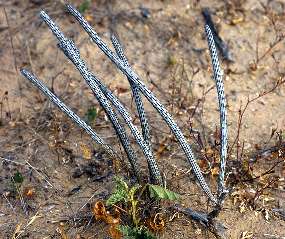
Peniocereus striatus usually grows among shrubs, but is difficult to see even when in the open. Near La Poza, BCS. Photo: Mark Dimmitt |
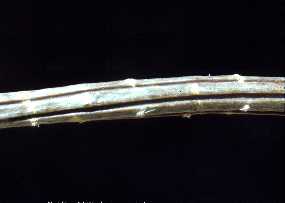
Stem of Peniocereus striatus. Photo: Mark Dimmitt |
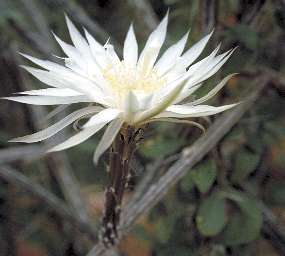
Flower of Peniocereus striatus. Photo: Mark Dimmitt |
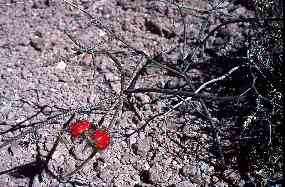
Peniocereus striatus is easy to find only when in flower or fruit (above). Near La Paz, BCS. Photo: Mark Dimmitt |

Stems of Peniocereus striatus (left) and Euphorbia cryptospinosa. Photo: Mark Dimmitt |
The stems of
Peniocereus striatus are remarkably convergent with those of the African succulent
Euphorbia cryptospinosa. In addition to the visual similarities, the stomates of both species are concentrated in the stem grooves. The grooves provide a more humid microenvironment where transpiration is reduced. When the stems are dehydrated from drought, the grooves close, reducing the surface area exposed to transpiration as well as sealing off most of the stomates.
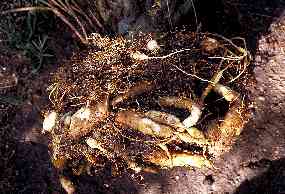
Roots of a cultivated cutting-grown Peniocereus striatus. Photo: Mark Dimmitt |
















